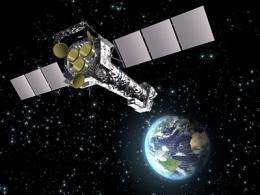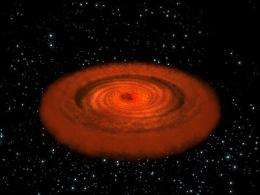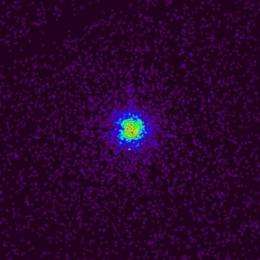XMM-Newton celebrates decade of discovery

(PhysOrg.com) -- ESA's XMM-Newton X-ray observatory is celebrating its 10th anniversary. During its decade of operation, this remarkable space observatory has supplied new data for every aspect of astronomy. From our cosmic backyard to the further reaches of the Universe, XMM-Newton has changed the way we think of space.
On 10 December 1999, an Ariane 5 blasted off from Europe’s Spaceport in Kourou, French Guiana, carrying the 10 m-long XMM-Newton satellite. It spent eight days manoeuvring into its operational orbit around Earth, a highly elliptical circuit that reaches a third of the way to the Moon. XMM-Newton’s three gold-coated mirror modules began focusing X-rays onto its five instruments soon afterwards. An optical monitoring camera allows astronomers to pinpoint their targets. What began as a steady stream of new data turned into a flood, with more than 2200 research papers now published based upon XMM-Newton’s observations.
“10 years is a long time for a space mission; we have made progress in all aspects of astronomy,” says Norbert Schartel, ESA Project Scientist for the mission.
X-rays from space are usually produced under the most extreme conditions, often from dramatic celestial events. They can be generated in the intense gravitational and magnetic fields surrounding celestial objects such as neutron stars and black holes, or when gigantic clouds of gas collide within clusters of galaxies.

XMM-Newton has excelled at studying black holes or, more accurately, their environment. By identifying X-rays given off by iron atoms, it has probed the way black holes twist the fabric of space-time around themselves. It has also revealed the way in which supermassive black holes grow and drive the evolution of the most massive galaxies in the Universe, and it has traced the development of the largest structures in space: galaxy clusters. It has tracked the production and dispersal of heavy chemical elements by exploding stars, and measured powerful magnetic activity coming from young Sun-like stars.
Closer to home, XMM-Newton has discovered that Mars has a vastly larger atmosphere than previously thought. The Red Planet’s tenuous outer layer, known as its exosphere, extends to six times Mars’ radius. It has shown that icy comets from the outer Solar System give off X-rays. Perhaps one of the most extraordinary results has been that XMM-Newton pinpointed a hot spot on a neutron star, 552 light-years away. The hotspot was just 60 m across, a minuscule patch to see so clearly from Earth orbit. The satellite then went on to make similar discoveries on two other neutron stars.
XMM-Newton has played its part in the study of dark matter, the hypothetical substance thought to outweigh normal matter by five to one. The favoured variety of dark matter would release X-rays or gamma rays if a particle decays. XMM-Newton has looked for these ‘decay lines’ in galaxy clusters but not found anything, helping theorists to constrain their ideas.

Today, XMM-Newton remains at the forefront of astronomy, supplying data to some 2000 astronomers around the world, who currently produce around 300 refereed papers every year. Every second of observing time is highly contested, with astronomers regularly requesting seven-fold the amount available every time the project team asks for new observing proposals.
As for the future, there is plenty left to study. The earlier Rosat telescope catalogued 125 000 X-ray sources, whereas XMM-Newton has studied only about 4300 of them. Even after its decade in space, the satellite remains in excellent shape. “Technologically, there’s nothing to stop us continuing for another decade,” says Schartel.
Provided by European Space Agency (news : web)


















